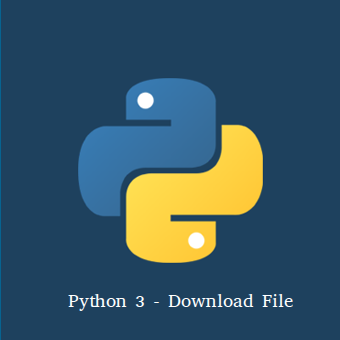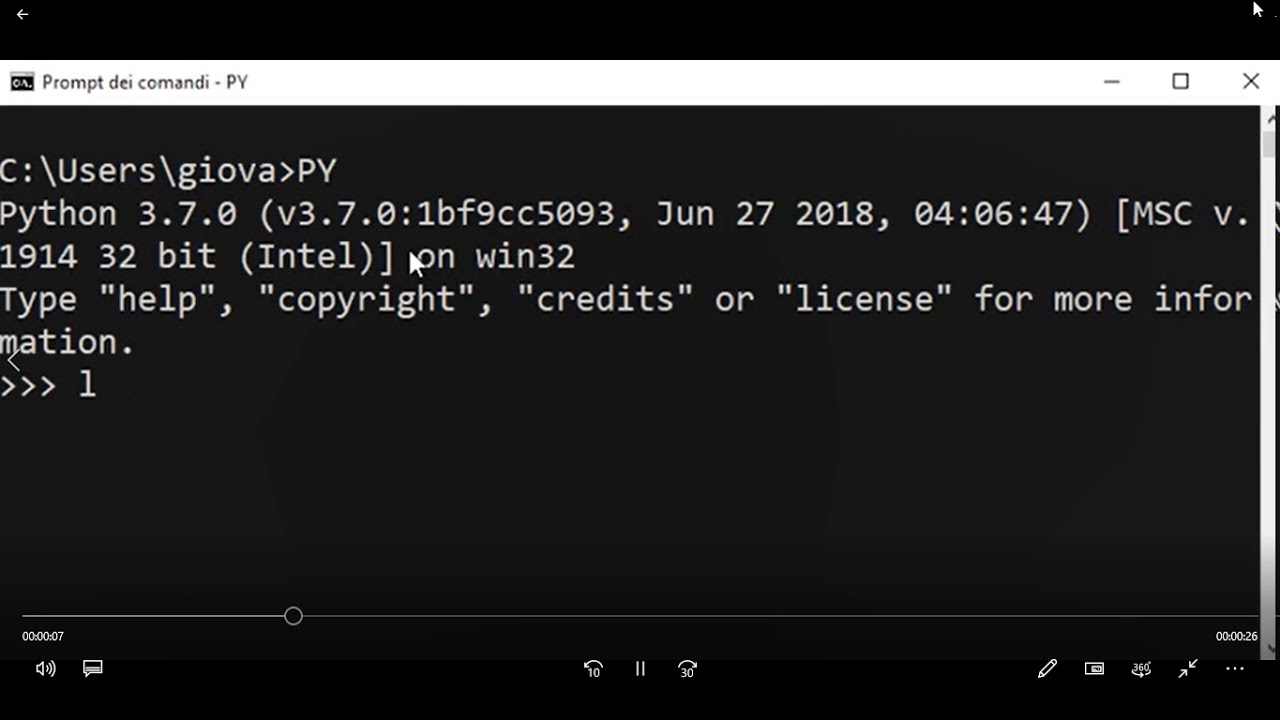

I’ve found the requests library to offer the easiest and most versatile APIs for common HTTP-related tasks. The downloaded data can be stored as a variable and/or saved to a local drive as a file. Final Thoughtsĭownloading files with Python is super simple and can be accomplished using the standard urllib functions. A Python can be used to download a text or a binary data from a URL by reading the response of a. Note: The wget.download function uses a combination of urllib, tempfile, and shutil to retrieve the downloaded data, save to a temporary file, and then move that file (and rename it) to the specified location. Python version Maintenance status First released End of support Release schedule 3.10 bugfix 2026-10 PEP 619 3.9 bugfix 2025-10 PEP 596 3.

PYTHON DOWNLOAD URL WINDOWS
The wget Python library offers a method similar to the urllib and attracts a lot of attention to its name being identical to the Linux wget command. Download Python Download the latest version for Windows Active Python Releases For more information visit the Python Developer's Guide. That’s beyond the scope of this tutorial. Note: downloaded files may require encoding in order to display properly.

This is a directive aimed at web browsers that are receiving and displaying data that isn’t immediately applicable to downloading files. When a web browser loads a page (or file) it encodes it using the specified encoding from the host.Ĭommon encodings include UTF-8 and Latin-1. There are some important aspects of this approach to keep in mind-most notably the binary format of data transfer. Instead, one must manually save streamed file data as follows: import requests However, it doesn’t feature a one-liner for downloading files. The Python requests module is a super friendly library billed as “HTTP for humans.” Offering very simplified APIs, requests lives up to its motto for even high-throughput HTTP-related demands. In other words, this is probably a safe approach for the foreseeable future. import wget fileurl ' destfile '/Users/pankaj/pt.png' wget.download (fileurl, destfile) The destination file argument is optional. Note: urllib is considered “legacy” from Python 2 and, in the words of the Python documentation: “might become deprecated at some point in the future.” In my opinion, there’s a big divide between “might” become deprecated and “will” become deprecated. Here is the Python program to download a file from URL using wget library. Request.urlretrieve(remote_url, local_file) Let’s consider a basic example of downloading the robots.txt file from : from urllib import request This includes parsing, requesting, and-you guessed it-downloading files. Pythons’ urllib library offers a range of functions designed to handle common URL-related tasks. This article outlines 3 ways to download a file using python with a short discussion of each. If you don’t choose the binary mode you’ll get this error:įile "python-file-downloader.Other libraries, most notably the Python requests library, can provide a clearer API for those more concerned with higher-level operations. The 'wb' means, that you are opening the file for writing purposes in a binary format.
PYTHON DOWNLOAD URL CODE
pdf, mp3, zip) from the URL and save it to your local drive, use the Python’s code as follows: If you need to save the downloaded data as a text file, you can do this as follows: read() first downloads the data in a binary format, then the. Use the following Python snippet to download a web page or a text file from the URL, save its content to a variable and then print it:
PYTHON DOWNLOAD URL HOW TO
The downloaded data can be stored as a variable and/or saved to a local drive as a file.īelow you will find the examples of the Python code snippets for downloading the different types of files from URLs and storing them as variables or saving locally.Ĭool Tip: How to set the ‘User-Agent’ HTTP request header in Python! Read More →ĭownload a File from URL using Python Text Data A Python can be used to download a text or a binary data from a URL by reading the response of a.


 0 kommentar(er)
0 kommentar(er)
